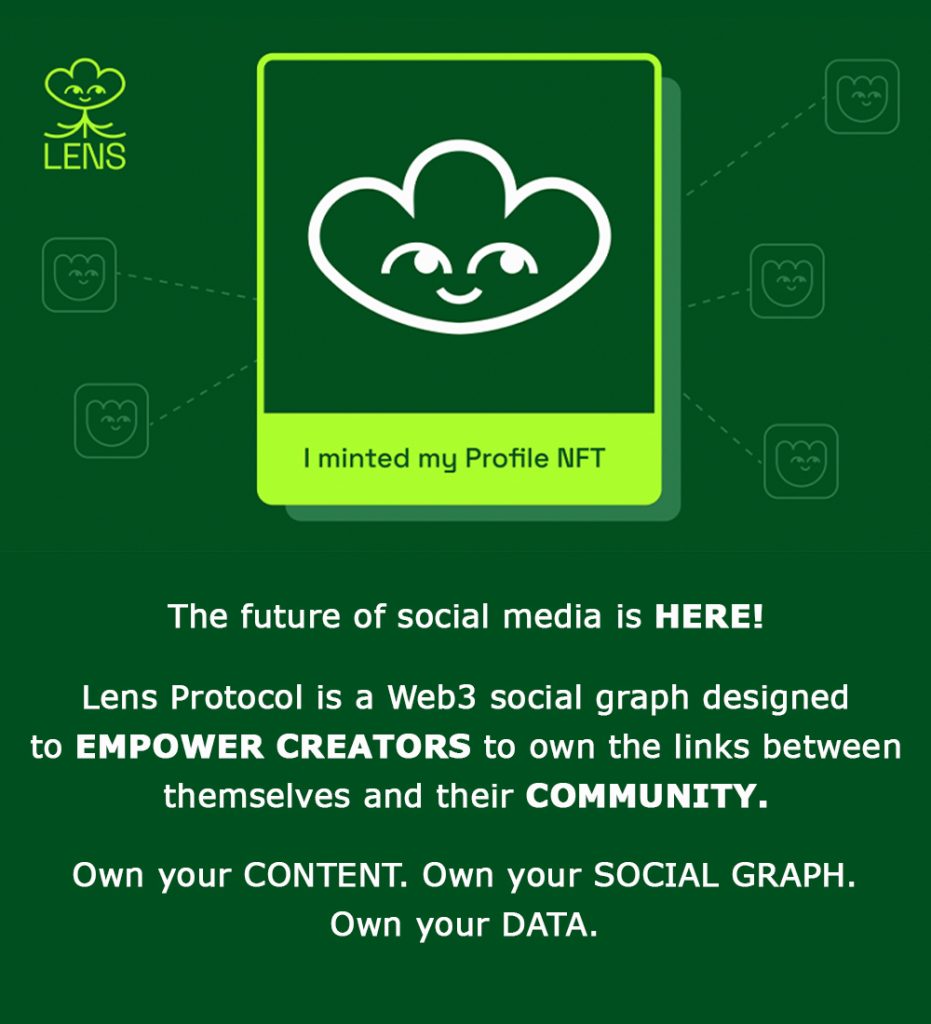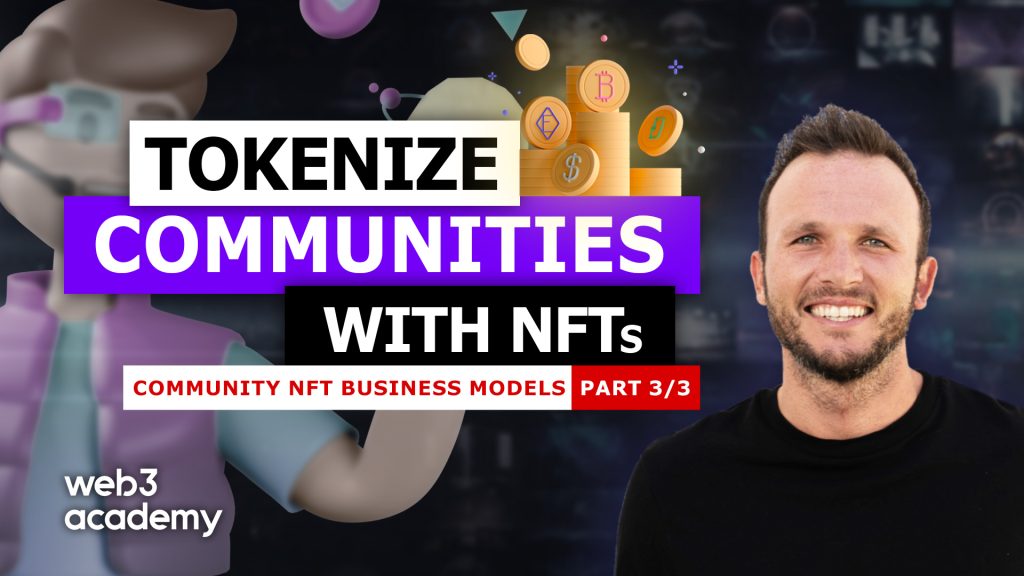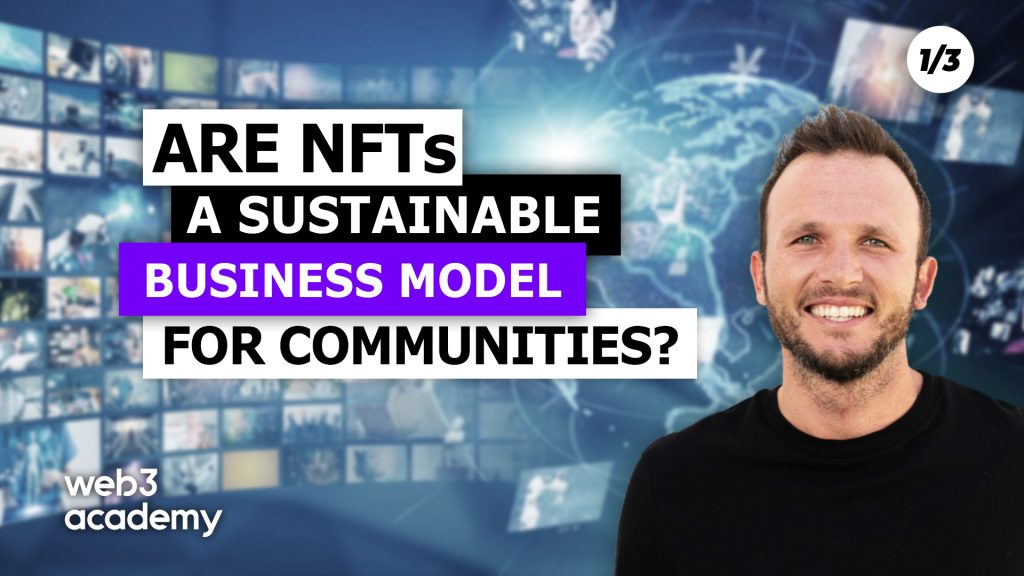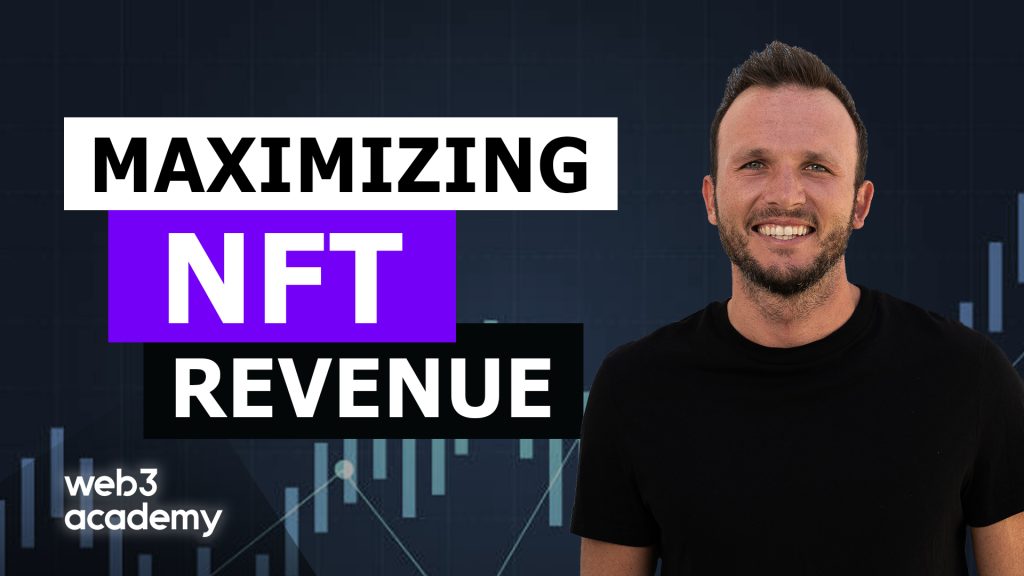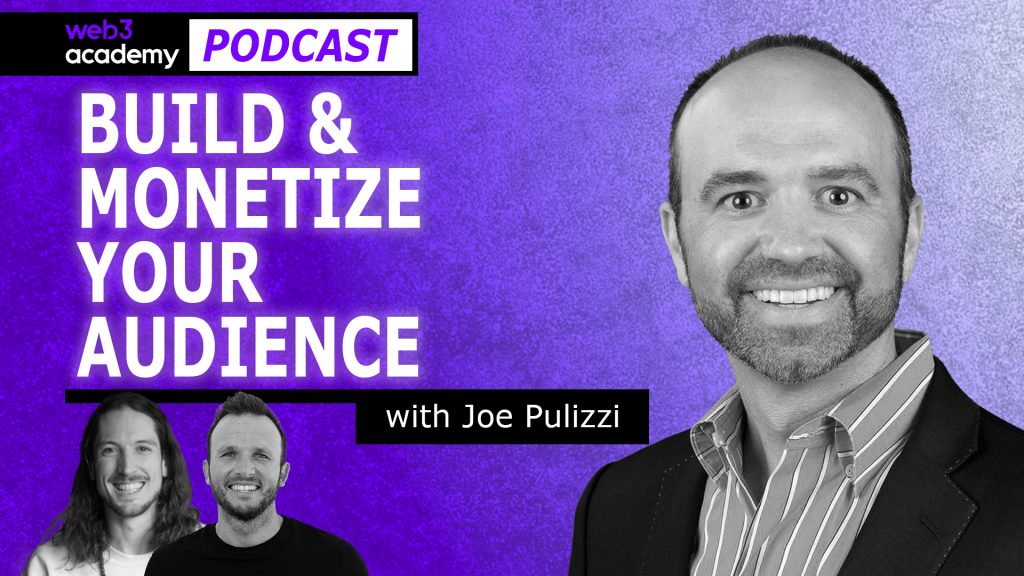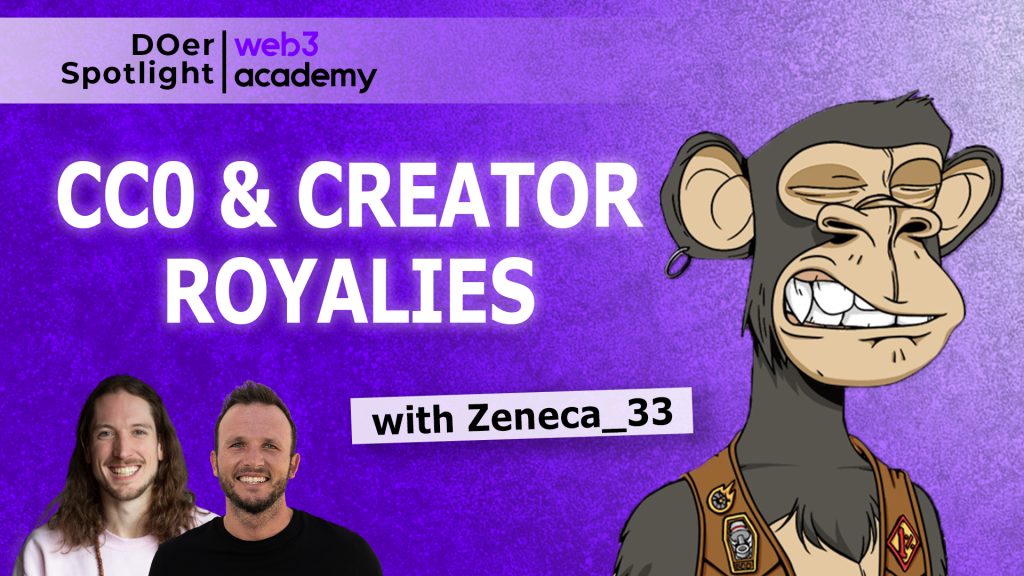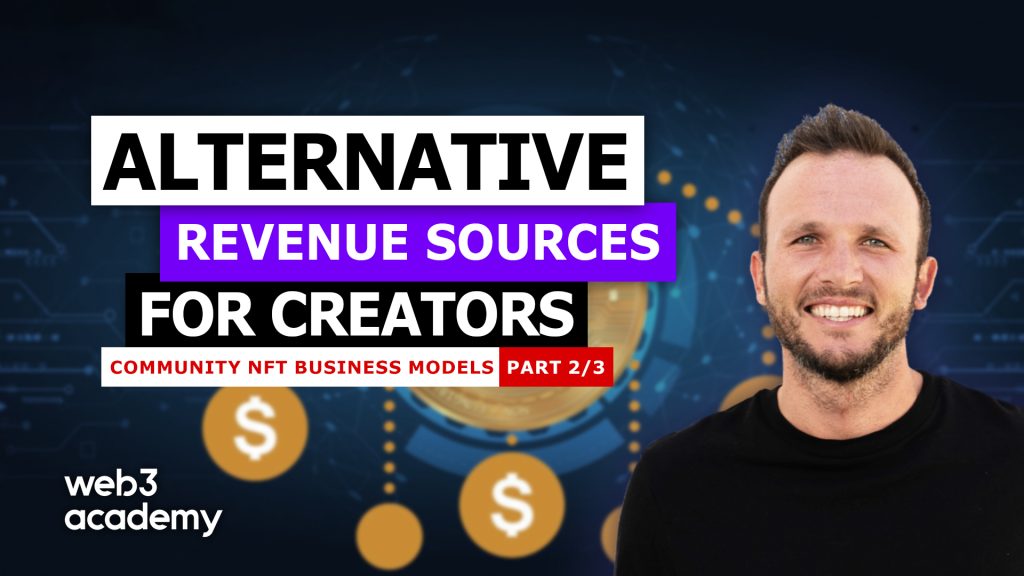
Community NFT Business Models Part 2: Alternative Revenue Sources for Creators
Discover Three Ways You Can Generate Revenue With A Tokenized Community
Watch or listen to all of our content on your
favourite platform 🎧
GM fam!
It’s time for part 2 of our NFT Business Models series.
Tokenizing communities with NFTs was all the rage in 2020 and 2021.
Communities raised millions of dollars and made headlines weekly. The promise was to raise funds and build together as a community, sharing in the upside.
But now that the NFT hype has settled, most communities are realizing that much of their NFT values were propped up by speculators and traders. 📉
Community building doesn’t seem to be as easy as we once thought. And many NFT businesses realize that they don’t have an ongoing source of revenue.
Some NFT thought leaders have even gone as far as saying that the NFT business model is broken. That’s exactly why we’re taking this time to explore the sustainability of these business models.
The goal? 🏹
Find the model that creates the best experience and incentives for both the customers and the creator, and write the playbook for future tokenized communities. 🎯
In the first article, we discussed:
- How we monetized communities in web2.
- We broke down the current playbooks for tokenizing communities in web3.
- And we explored the model of relying on NFT royalties as a business model.
So if you haven’t yet read the first article in this series, I recommend you start there:
👉 Are NFTs a Sustainable Business Model Tokenizing Communities? 👈
This reading will give you the foundational knowledge you need to explore the alternative business models for tokenized communities we discuss below.

JOIN OUR COMMUNITY
But before getting into it, we wanted to let you know that our Discord has opened back up. 🥳
This is a place where our community comes together to:
- Talk about the latest developments in web3
- Share their perspectives on the news and events
- Discuss questions that arise after viewing the podcast or newsletter
- Speak directly with Kyle, Jay, and the rest of the Web3 Academy team
The ultimate goal is to grow together, as a community and stay at the forefront of web3!
Come along, fren! 🚀
Alternative NFT Business Models For Creators With Tokenized Communities
In the first article, we established that it’s not wise to rely solely on NFT royalties as an ongoing revenue stream.
With that in mind, it’s important that we explore other models that could generate revenue for the creator tokenizing their community.
1. Holding a Percentage of the NFT Collection
One way for a creator to generate additional revenue through tokenized communities is by holding some of the NFTs in a collection and selling them on an ongoing basis.
So long as your NFTs hold value and there are more people wanting to join your community, this can be a viable option to generate ongoing revenue.
You could think of this as selling equity in your company as it rises in value, a very common practice in traditional markets.
LarvaLabs, the creators of Cryptopunks, Meebits, and Autoglyphs is a great example of this. They held 10% of the Cryptopunk supply and launched with zero royalties as part of their strategy.
Over time, the price of a Cryptopunk increased exponentially (current floor price is around 65 ETH) and LarvaLabs was able to sell some of their punks along the way. In the end, LarvaLabs sold the entire business to YugaLabs (creators of BAYC) with 500 CryptoPunk NFTs included in the multi-million dollar deal.
Again, this business model relies heavily on the price of the NFTs appreciating over time and will exclude most people from joining your community.
It may also be a model which is frowned upon by the community as you end up increasing market supply which could cause the price of the NFT to decrease. But you can negate this by slowly selling your holdings when collection demand is high.
That said, like any business, as long as you continue to provide enough value to customers (aka holders), there’s no reason that this strategy should be a problem for your community.
Keep in mind that this strategy is essentially just delaying revenues to a later date. You earn less at launch as you’re selling fewer NFTs in hopes that you can earn more later through price appreciation.
In comparison to the traditional world, this model is kind of like building a business and never taking a salary. Instead, you rely solely on selling shares to earn revenue which isn’t ideal unless you have other revenue sources.
I think this can definitely be a viable option to consider for revenue. But again, I would incorporate it along with other revenue streams discussed in this article.
Tired of YouTube ads? Check out our shorts on LensTube! 🌿
2. Launching a Second Token
One of the more common strategies of NFT creators in 2020 and 2021 was to simply launch a second token, whether as an NFT or fungible token.
For example, LarvaLabs launched CryptoPunks and then later launched Meebits, giving free first-mint access to CryptoPunks and Autoglyphs holders.
Yuga Labs did the same with Bored Ape Yacht Club and then Mutant Ape Yacht Club. They followed these collections with a fungible token—APE coin—and then launched metaverse land plots as NFTs.
Many other businesses with NFT collections followed suit by launching a second collection. Unfortunately, other than the two above, most of these didn’t fare so well in terms of holding value.
The reason is that launching a second collection isn’t as simple as selling an additional product to your community.
It’s best to think of each NFT collection as a separate community or, depending on its purpose, a separate business.
As we mentioned in the first article, in order for this endeavor to make financial sense (for the creator and token holders), the creator needs the NFTs to appreciate, meaning they need more buyers than sellers.
Acquiring more buyers than sellers was fairly easy to do during the past speculative mania—all you needed was some loud hype. But during a bear market, the creator and its community need to build something of true value to draw people into the community, enabling the collection to appreciate.
But here’s where things get tricky.
Managing and building a community or business online with 10,000 strangers is an extremely difficult task. I believe this isn’t something one creator can successfully do on their own and I’ve yet to see it done well in web3.
Yet, many of these creators decided that their next best move was to launch another NFT collection (aka community or business). While this resulted in another large sum of money for some NFT collections, again, I question how they plan to generate sustainable revenue.
How do they expect to manage and build with two large communities of strangers at the same time?
To me, this seems like nothing more than a pipe dream that will never be realized.
The problem with so many projects launching a second token and failing is that a lot of people will lose money. These failures mean that buyers will become smarter and no longer invest in communities that plan to launch a second token.
This isn’t to say that launching a second token isn’t a good idea.
It’s just that you should only launch a second token when you’re ready to build a second business or community—not because your existing one needs to earn more revenue.
But there’s one example in the web3 space that stood out to me where launching a second token actually made sense in terms of a sustainable business model for the creators and their community.

EXTRA CREDIT
Learn About The Current Playbooks For Monetizing Digital Communities
Monetizing digital communities isn’t something exclusive to web3. Head back to part one of our NFT Business Models series to learn about the current playbooks for monetizing digital communities and whether relying on royalties is a safe bet.
👉 Are NFTs a Sustainable Business Model for Creators Tokenizing Communities?👈
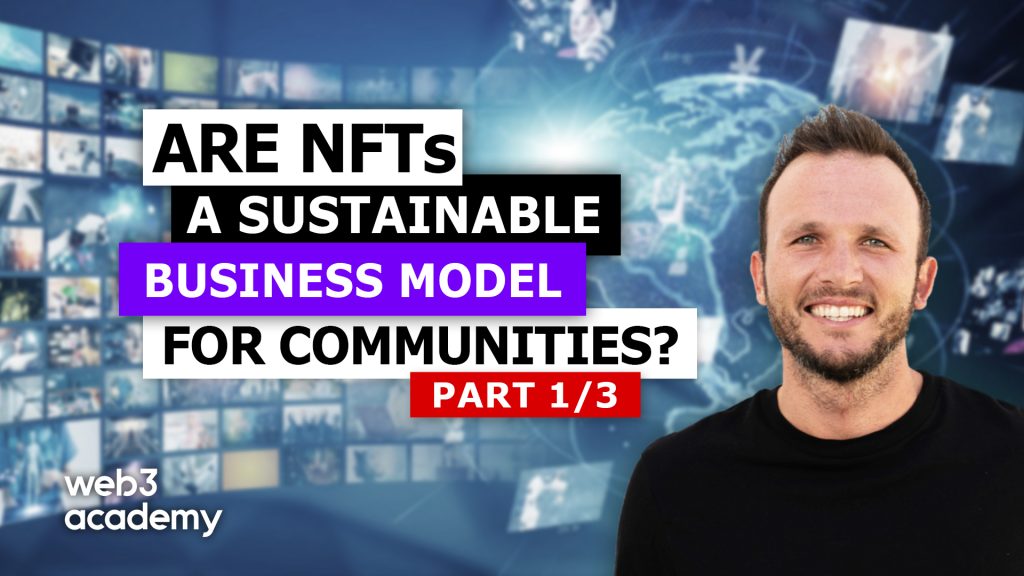
3. NFT-Gated Membership with Tiers: Bakery DAO Case Study
The easiest way to explain this strategy is to do so via an example. So let’s learn about one of my favorite web3 business models to date.
An anonymous content creator who goes by the name Croissant on Twitter came up with a very interesting experiment with NFT memberships called Bakery DAO.
Croissant shares great content and insights into the Ethereum Ecosystem which is how they built a large following on Twitter. They then decided to monetize their content via a newsletter and Discord with the intention of turning their audience into more of a community, the web3-way!
Rather than launching a web2 paywalled subscription (which we covered in the previous article), Croissant chose to launch an NFT-gated membership.
In this scenario, customers could choose between two NFT tiers that provided different features and access.
- Tier 2: In this entry-level option, Croissant included an ongoing 30-day subscription with basic access to content in the newsletter and Discord community. This membership level, similar to web2 models, has an unlimited supply.
The benefit of using an NFT rather than web2 commerce is that customers have the option to sell their remaining subscriptions rather than simply cancel and lose out on the rest of the month. Plus the NFT enables much better cross-platform interoperability which web2 doesn’t!
- Tier 1: In this premium option, Croissant gives holders VIP access across the newsletter and community with no expiry (aka a one-time purchase). The really interesting part of Tier 1, though, is its limited supply and revenue sharing which drive demand (Tier 1 holders receive a revenue percentage of all Tier 2 purchases).
What Croissant did here is merge the web2 and web3 business models. On one hand, they created a community tier that is incentivized to build with them and share in the upside via NFT ownership. And on the other hand, they also tap into the scalable business model of recurring subscriptions via the Tier 2 NFTs.
Should they succeed, the Tier 1 membership access may significantly appreciate in value and any secondary sales could provide royalties back to Croissant. While the Tier 2 membership, due to its unlimited supply, will remain at a low monthly price.
The NFT membership tiers give options to their customers as some audience members may simply want to consume content at a low fee while some may be passionate about Croissant’s mission and want to help build and grow the business.
This model combines the scalability of the web2 membership model for both the creator and the customer, and also enables the creator to use the magic of web3 to tap into the true potential of a community.
A very interesting business model and one that I could see being very successful and sustainable for tokenized communities.
For those interested, I will share more on NFT membership design in the third article of this series.

DEEP DIVE POLL
Which NFT business model do you like best?
- Reserving part of the NFT collection.
- Launching a second token (fungible or non-fungible).
- NFT-gated tiered memberships.
🚀 Reply to this email and let us know!
What Does It Really Mean To Tokenize and Build With Your Community?
Providing ownership to your community is one of the great unlocks of web3. When humans own something our psychology around that thing changes significantly.
Think about the way you treat a car or home that you own versus one that you rent. Or even think about the way you treat your home versus a hotel or an Airbnb.
Ownership brings responsibility and accountability.
Now, take it a step further and include the potential for the item you own to appreciate or earn revenue and our psychology alters even further.
This is the power of digital ownership.
Building with your community unlocks the power above in 1,000s of passionate members who consume, engage, and would likely pay for your content—even without ownership or incentive.
It takes a passive community (audience) and turns them into active contributors.
Their contributions could be in the form of marketing, sales, strategy, development, and so much more. The opportunities here are truly endless.
This is the reason why creators are so excited to tokenize their audience and community. For the first time, we can now join forces with our community and customer base to further the mission of our business.
As I mentioned in the first article, once you tokenize your community you have to decide what to do with the funds you raise.
You can either:
- Share a percentage with the community.
- Give it all to the community.
- Or take it all for yourself.
As you can see, there is a lot for a creator to decide when tokenizing a community with NFTs
What’s the proper setup for your NFT? What business models should you implement? Should you share mint revenue? And so much more…
The final article in this three-part series will dive deeper into how you can best think about answering the questions above.
It will become the Ultimate Guide For Creators to Tokenize Communities with NFTs.
Have you found this series of articles helpful so far?
Reply to this email with ‘yes’ or ‘no’ so we can understand if we should write more content like this.
Also, if you have any feedback, additional ideas, or thoughts around this topic please feel free to share that in the email with your yes or no response.
This is how we all level up together as a community.
👉 If you enjoyed this edition, check out our next installment, NFT Tokenized Communities Part 3: The Ultimate How-to Guide for Creators 👀
ABOUT THE AUTHOR
Kyle Reidhead
Founder of Web3 Academy & Impact Digital Marketing
Find him: Twitter

FOR THE DOERS
Take Action & Level Up
LEARN
Take our FREE Web3 Rabbit Hole Course to get up-to-speed on the foundational components of Web3 so you can confidently build, work, or use the fastest growing technology in history.
COMMUNITY
Our Discord has opened back up. Join the community to discuss web3 news, questions arising from the podcast, and speak to Kyle and Jay directly. Can’t wait to meet you ✌️
READ
Learn about The Truth of NFT Royalties.

LEVEL UP WITH WEB3 ACADEMY
Subscribe: Apple Podcast | Spotify | Youtube
Follow: Twitter | TikTok | Instagram | Facebook

REPLY TO TODAY’S EMAIL
👉 Have you found this series of articles helpful so far?
🚀 Reply to this email with Yes or No and let us know.




